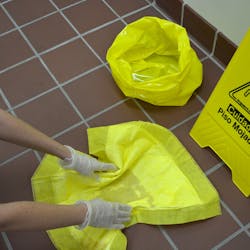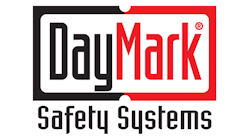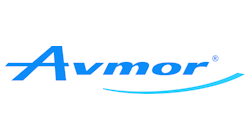On Jan. 13, the New Jersey Department of Health said that an international traveler with a confirmed case of measles arrived at Terminal C at Newark Airport and left several hours later in the day for Indianapolis.
The department sent out a bulletin about this to help reach passengers on this person’s flight. Further, there were concerns because the passenger was in the building for several hours. During this time, the passenger likely touched a variety of different surfaces, possibly spreading the disease to others.
Most travelers think they are more likely to contract a disease, such as the measles, while in the air sitting near or next to someone with the disease. But the reality is diseases can spread just as easily on the ground, in the airline terminal. This is true of scores of different viruses and other diseases. In fact, it’s what cross-contamination is all about.
To explain, let’s use measles as an example. Measles can be spread through the air when someone with the illness coughs or sneezes. But the same cough and sneeze can also spread germs onto high-touch surfaces nearby. When someone else touches these contaminated surfaces and then touches their eyes, mouth, or nose, the process of cross contamination can begin.
About the only way airport administrators can stop the spread of diseases such as this is through effective cleaning. One of the “mantras” of the professional cleaning industry is that the goal of the industry is to “clean for health.” This is a perfect example of this mantra in action.
Stopping the Spread of Disease
So what steps can administrators and their custodial crews take to help prevent the spread of disease in their facility? Among them are the following:
Know where the germs are. A June 2018 study by InsuranceQuotes.com, found that it is not restrooms that are the most pathogen ridden areas in an airport, but the touch screens of self-check terminals. Their study of 15 different airports also found that bench armrests and water fountain controls were also more germ ridden then the restroom surfaces.
Establish benchmarks. Using touch screens as an example, we can use an ATP monitoring system to determine if potentially hazardous pathogens are on a surface and in what quantity. Adenosine triphosphate bioluminescence, better known as ATP, does not indicate if specific pathogens are present on the screen. It just indicates that they might be present and in what numbers. Testing the surface before cleaning with an ATP monitoring system and then again after cleaning helps establish benchmarks, indicating readings when the surface is soiled and again after an effective cleaning. With this information, we can better determine when cleaning is necessary and by testing after cleaning we can ensure that we have accomplished our goal of effectively removing pathogens.
Knowing how to clean. According to Mike Watt, director of training with Avmor, a manufacturer of professional cleaning solutions, this is often the big stumbling block to effective cleaning in busy locations such as airports. “Cleaning workers often do not use cleaning solutions and disinfectants correctly. The result is that they may have wiped a surface with a cleaning solution and even used a disinfectant, but that surface may still have pathogens present that can cause disease.”
The Proper Way to Use Cleaning Solutions and Disinfectants
Because the proper use of cleaning solutions and most disinfectants is such a critical issue, let’s explore this a bit further. Watt says the first thing we need to know is the difference between cleaning and disinfecting. “Cleaning is the removal of visible soil on a surface. Disinfection refers to the ‘killing’ of microorganisms and pathogens on surfaces that can cause disease.”
Using a water fountain as an example, Watt suggests that the water fountain surfaces and controls all be cleaned first with an all-purpose cleaner. Then the disinfectant should be applied. “Give it a few minutes to dwell on the surface. This will give the disinfectant time to work effectively, then wipe the surface clean using a different cleaning cloth.”
In other words, it’s a two-step process. Custodial workers either were not trained to do this, forget to perform the two steps, or “simply get too busy. But it must be done.”
Watt describes some other points we should know specifically about disinfectants:
- Always dilute the product correctly per manufacturer’s instructions
- Read the “kill claims” on the product’s label. If you do not know specifically what types of pathogens might be on a surface, use a disinfectant labeled as a “wide spectrum” disinfectant. This is designed to kill most types of pathogens
- Pay attention to dwell times on the label. These do differ with different products
- Be aware of quat binding. “Quat binding occurs when the disinfectant becomes absorbed into the cleaning cloth,” says Watt. “When this happens, the disinfectant may lose its efficacy”
“Accidents” That Can Spread Disease
There is one type of accident that happens in airports, which administrators must be very concerned about, and that is when someone gets sick. Today, most restaurants and food service outlets assume when such an incident occurs, it likely is caused by norovirus. Despite traditional thought, norovirus is far more common on land than at sea—it just gets more news coverage when it occurs on a crowded cruise ship.
Airport administrators and custodial crews must be aware that norovirus germs become airborne. According to some studies, they can spread as much as 25 feet from the incident. When they land on surfaces, they can remain “alive” for up to two weeks, much longer than most other types of pathogens. As a result, touching a contaminated surface during that two-week period carries a high risk of contracting norovirus.
So, let’s assume someone gets sick in an airport walkway. Duane Carey, a professional cleaning expert with DayMark Safety Systems, manufacturer of products to help prevent the spread of disease for the food service industry, suggests that cleaning workers do the following to protect themselves as well as others from norovirus in the airport:
- Place warning cones over the problem area
- Wear protective gear such as an apron, gloves, and goggles
- Have double-bagged trash bags available, next to the area needing attention
- Cover the spill with a spill pad
- Spray or pour a broad-range disinfectant over the pad and the surrounding area
- Allow the chemical to dwell for the appropriate time
- Clean up the spill with the pad and place it in the trash bag
- Spray disinfectant over the same area again and wipe clean with a disposable towel
- Place all materials and clothing in trash bags and dispose of in a dumpster outside
- Wash and sanitize hands after discarding trash bag
“I strongly advise that airports have several ‘spill kits’ in stock and placed throughout the facility,” says Carey. “A properly equipped spill kit will contain all the tools needed to clean up such an incident, including disposable protective clothing, shoe covers, gloves, trash bags, a spill pad of approximately 12 inches by 12 inches and even a combination mask/face shield. All of these items are necessary to clean the area and protect everyone’s health.”
What happened at Newark Airport is likely just one of thousands of such incidents that occur every year… they just don’t get reported. And with a recent increase in international travel and the heavy summer travel season just beginning, airport administrators and cleaning crews must take all steps necessary to keep the users of their facilities healthy. No one wants their airport to be the subject of a health department bulletin.
Robert Kravitz is a frequent writer for the professional cleaning and food service industries.




